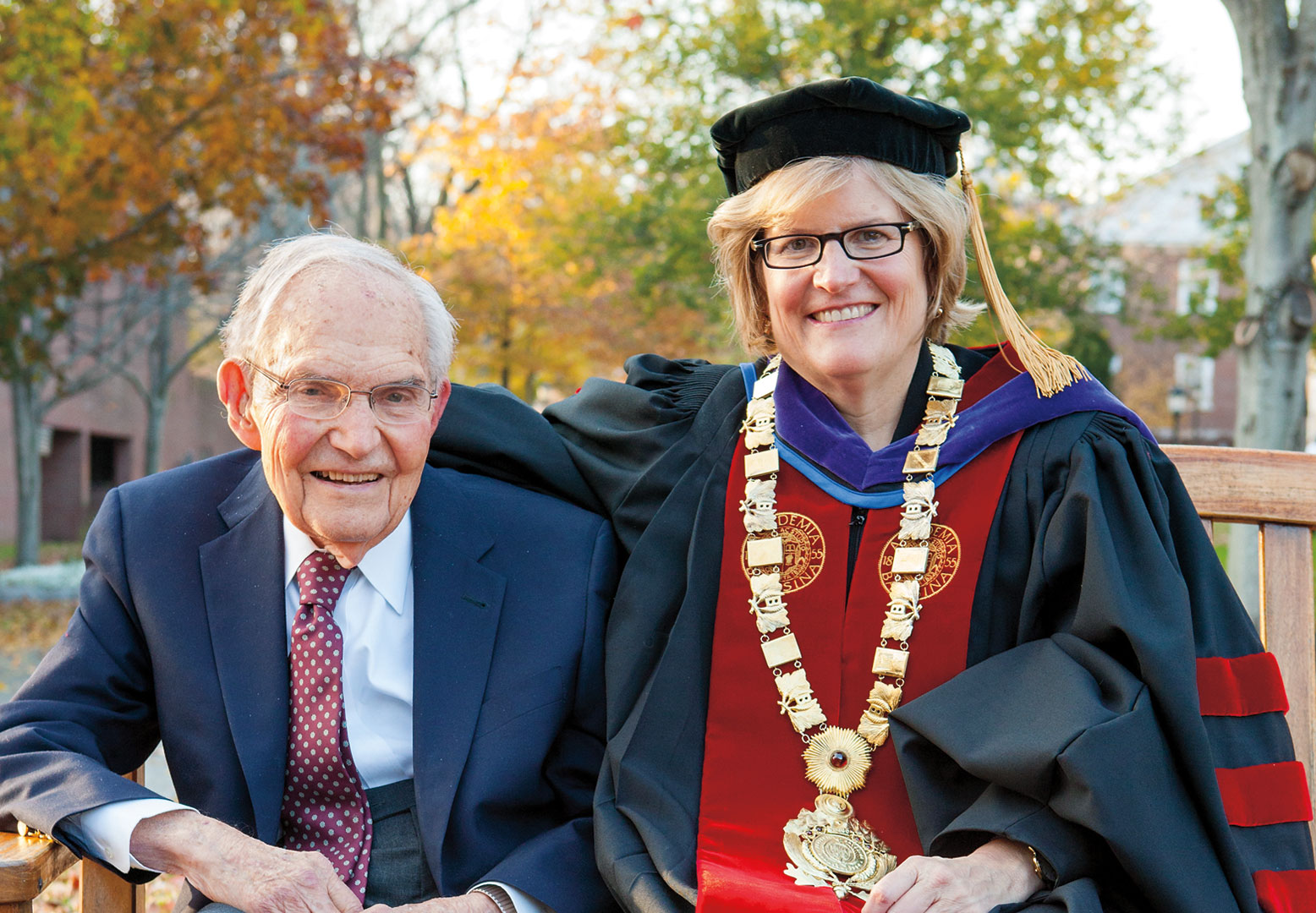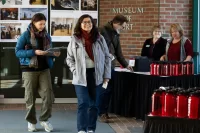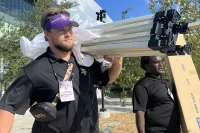
Gifts to Bates surge 33 percent in 2014, topping $16 million
Bates is celebrating a banner year in philanthropy to the college with total gifts from all sources surpassing $16 million as of the end of the 2014 giving year on June 30.
This total, the college’s highest since 2008, represents a 33 percent increase in dollars over the 2012–13 fiscal year.
“We have ambitious goals for Bates, and I am inspired by this outpouring of support from the college community,” said President Clayton Spencer.
“These gifts put real dollars to work toward initiatives that will enhance the educational experience for all students and keep Bates at the forefront of America’s liberal arts colleges.”
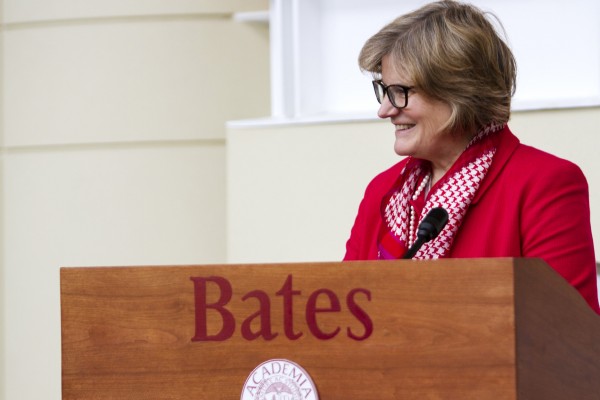
Resources from the Catalyst Fund contributed to this year’s impressive total by infusing support into the college’s three strategic priorities as articulated by President Spencer: the Engaged Liberal Arts*, Purposeful Work*, and Opportunity and Excellence*.
Announced last October by Mike Bonney ’80 P’09, P’12, P’15, chair of the Board of Trustees, the multi-donor Catalyst Fund pledge is the largest single commitment in Bates history.
“These priorities build on the strengths of our mission while embracing the forces that are shaping the future of higher education,” Spencer said.
“I want to thank the thousands of Bates alumni and parents who contributed this year, and to acknowledge the vision of the Catalyst Fund donors, whose gift helped propel us to this new level.”
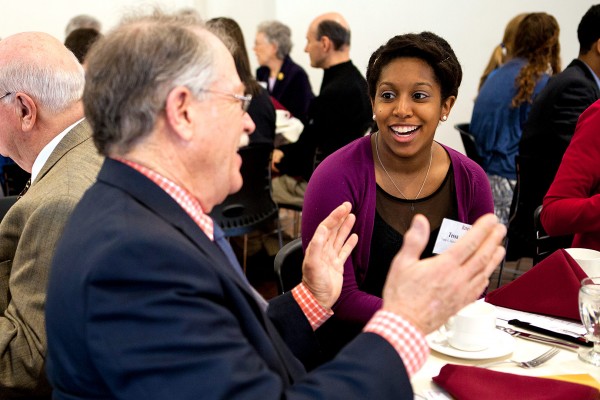
Within the Mount David Society, 35 new donors gave at the President’s Associates level of $10,000 and above. Mount David Society gifts totaled $4.8 million, including a matching contribution from anonymous Bates alumni.
Gifts to Friends of Bates Athletics, which have grown 27 percent in the last four years, climbed to $491,349.
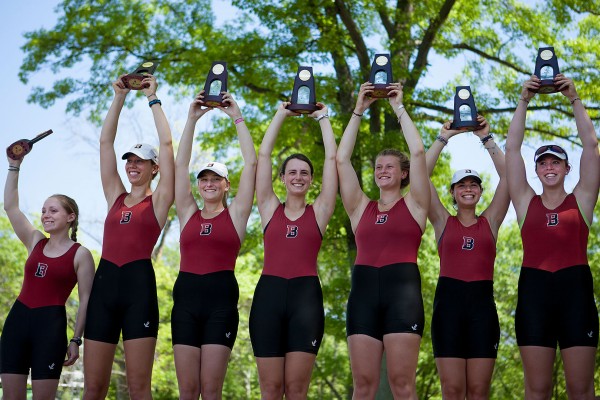
Much of this success is thanks to the hundreds of volunteers who called, emailed and visited classmates and fellow parents, encouraging engagement and philanthropy at Bates.
Heading up the volunteer effort were the 19 members of the Bates Fund Executive Committee, led by trustee co-chairs Bill Carey ’82 P’13, P’14 and Rick Smith P’12.
As a result of their efforts, $6.1 million of this year’s total was raised for the Bates Fund, providing current-use dollars for core strategic needs and priorities, including academic resources, faculty salaries and student programs.
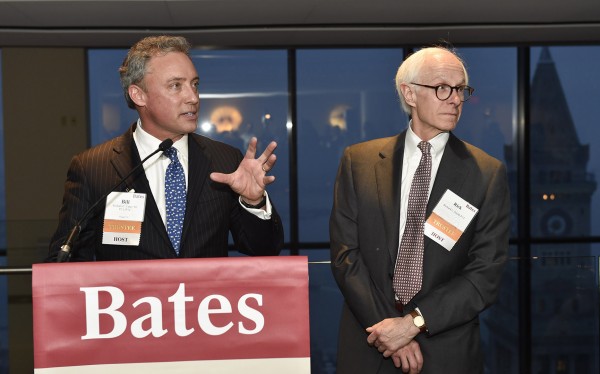
Bates continues to be a national leader in annual giving participation, an established measure of alumni engagement. Forty-nine percent of alumni and 40 percent of parents — the highest parent participation rate in Bates’ history — gave to the college during 2013–14.
* The “engaged liberal arts” means delivering a rigorous and highly personalized education that centers on deep and sustained interactions among students, faculty, and community. It also means engaging the forces — intellectual trends, demographic changes, and technology — that are transforming higher education and the world into which our students graduate. It means making a virtue of our scale; creating a diverse and motivated community of students, faculty, and staff; and embracing innovative and evidence-based approaches to teaching and learning. back to article ^
* Purposeful work is a college-wide initiative built on the premise that preparing students for lives of meaningful work lies at the heart of the liberal arts mission. When fully developed it will include: (1) a co-curricular program involving cycles of exploration, reflection, and skill-building; (2) practitioner-taught courses during short term, and (3) a highly-structured Bates-specific network of internships, with the hope to guarantee every Bates student a paid internship that is either employer- or Bates-sponsored. back to article ^
* A commitment to opportunity and excellence grows directly out of Bates’ history and mission and responds to contemporary geographic, demographic, and economic realities. It means recruiting talented and motivated students from a broad range of backgrounds, providing them with the financial aid that will enable them to enroll, and supporting them for academic and personal success once here. It also means creating a campus community and climate that capitalize on diversity and inclusion as necessary and powerful dimensions of preparing our students to live and work in an increasingly interconnected world. back to article ^
